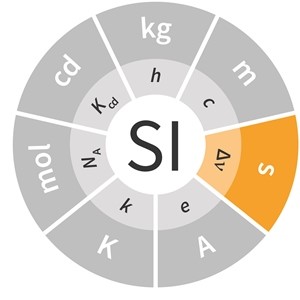Units and Measurements - Fundamental Units, Definition of Units, Conversion of Units, System of Units and Dimensions
In our day-to-day life, we often use units and dimensions in one or more ways, We go to the grocery store and ask for 1 kg potato. Have you ever wondered what is this kg? - If yes then we have got answers for you below.
Physics is a subject based on physical quantities. Therefore, one needs to clearly understand the basic concepts of Physics. One such concept is Units and Measurements. In this topic of Units and Dimensions, we have discussed the various types of units, systems of units, physical quantities, conversion of units and dimensional formulas.
1. What is a Unit?
To measure any physical quantity, it is compared with a standard quantity, the standard quantity used for measuring that physical quantity is called its Unit.
Example: To measure the quantity of milk it is compared with liter so liter is its unit.
Characteristics of a Standard Unit
A standard unit should have the following features:
- Convenient size
- Well defined
- Independent of Time and Place
- Internationally accepted
2. Types of Units
The three types of units are as follows:
2.1. Fundamental Units
The Units used to represent the fundamental quantities are called Fundamental or base Units. These are basic units for measuring the physical quantities and don’t depend upon any other unit.
There are seven Fundamental quantities and thus seven Fundamental units:
| Fundamental Quantities and Fundamental Units (SI system) | ||
|
Fundamental Quantity |
Fundamental Unit |
Symbol |
|
Length |
Metre |
m |
|
Mass |
Kilogram |
kg |
|
Luminous intensity |
Candela |
cd |
|
Time |
Second |
s |
|
Electric current |
Ampere |
A |
|
Temperature |
Kelvin |
K |
|
Amount of substance |
Mole |
mol |
2.2. Derived Units
The units of physical quantities other than fundamental quantities are expressed by the combination of base units. A unit that is derived by combining fundamental units is called a Derived Unit.
Example: Speed= Distance/ Time
Distance is a physical quantity measured in metres and Time is measured in seconds, therefore the derived unit for Speed is metre/second (m/s).
|
Physical Quantity |
Derived Unit |
|
Volume |
m3 |
|
Speed |
m/s |
|
Acceleration |
m/s2 |
|
Force |
kg m/s2 or Newton |
|
Area |
m2 |
|
Work |
kg m2/s2 or Joule |
2.3. Supplementary Units
Units that are dimensionless are called Supplementary Units. These are used for the measurement of Supplementary quantities.
Ex: Units of Plane angle and solid angle- Radian and Steradian respectively.
3. Definition of Fundamental Units
Metre (m): One metre is the length of the path travelled by light in vacuum during a time interval with duration of 1/299792458 of a second.
Kilogram (kg): Since 1889, it has been defined as the mass of a platinum-iridium lump that is kept in a secured vault in Paris. But with effect from May 2019, it is defined in terms of second and metre by taking the fixed numerical value of the Planck constant (h) to be 6.62607015x10-34.
Candela (cd): One Candela is the luminous intensity, in a given direction, of a source that emits monochromatic radiation of frequency 540 x 1012 Hz and has a radiant intensity in that direction of (1/683) W/sr.
Second (s): One second is equal to the duration of 9192631770 periods of the radiation corresponding to the transition between the two hyperfine levels of the unperturbed ground state of the Caesium-133 atom.
Ampere (A): One Ampere is the electric current corresponding to the flow of 1/ (1.602176634 x 10–19) elementary charges per second.
Kelvin (K): One Kelvin is equal to the change of thermodynamic temperature that results in a change of thermal energy k T by 1.380649 x 10–23 J.
Mole (mol): Mole is the amount of substance of a system that contains 6.02214076 x 1023 specified elementary entities.
4. System of Units
4.1. CGS (Centimetre Gram Second) system
It uses centimetre as the unit of length, the gram as the unit of mass, and the second as the unit of time. It is also known as Gaussian System. It is replaced by MKS system.
4.2. MKS system (Metre, Kilogram, Second)
In this system metre, kilogram, and second (MKS) are base units. It uses metre as the unit of length, the kilogram as the unit of mass, and the second as the unit of time. It was adopted in 1889.
4.3. FPS system (Foot, Pound, Second)
In this system, the unit of length, mass and time are foot, found and second respectively. It is also known as British system.
4.4. S.I unit system (International system of Units)
In this system, seven fundamental units are used for measurement. It was adopted in 1960 in the International conference of weight and measure. It is also known as metric system. It is the standard system followed for International trade and commerce.

(Source: BIPM)
5. Physical Quantity based on Direction and Magnitude
5.1. Scalar Quantity
A quantity that can be represented by a magnitude only is known as Scalar quantity. These physical quantities have no direction.
Examples of Scalar Quantity are:
|
Scalar Quantities |
Distance |
|
Energy |
|
|
Power |
|
|
Time |
|
|
Speed |
|
|
Volume |
|
|
Density |
5.2. Vector Quantity
A physical quantity that has both magnitude and direction is called Vector Quantity.
|
Vector Quantities |
Displacement |
|
Velocity |
|
|
Torque |
|
|
Acceleration |
|
|
Force |
|
|
Weight |
|
|
Momentum |
6. Conversion of Units
One system of the unit can be converted into another system of the unit by following the basic rules. There are units that are multiples of another unit, e.g., 1 kilometre has 1000 metres, 1 hour has 3600 seconds, 1 kilogram has 1000 grams, etc.
|
Length
|
1 kilometre = 1000 metres |
|
1 metre = 100 centimetres |
|
|
1 centimetre = 10 millimetres |
|
|
1 inch = 2.54 centimetres |
|
|
1 Angstrom = 1.00 x 10-10 metres |
|
|
Mass |
1 kilogram = 1000 grams |
|
1 gram = 1000 milligrams |
|
|
1 pound = 453.59237 grams |
|
|
1 tonne = 2204 pounds |
Similarly, other units can also be converted.
7. Dimension
Every derived quantity can be expressed in some combination of fundamental quantities. The power to which fundamental quantities are raised to express the physical quantity is called the dimension of that physical quantity. All physical quantities can be expressed in terms of fundamental quantities. To express the fundamental quantities for dimensions, we represent the fundamental quantities with a symbol within a [ ]
The symbols for the fundamental quantities in dimensional form are - Length [L], Time [T], Mass [M], Electric Current [A], Temperature [K], Luminous Intensity [cd] and Amount of substance [mol].
Example:
A. Speed= Distance/ Time
= [L]/ [T]
= [LT-1]
B. Force= Mass × Acceleration
= Mass × velocity/ time
= Mass × Length/ time/ time
= Mass × length × time–2
= [MLT-2]
Dimensionless physical quantity:
Physical quantity which doesn’t have any dimension are called dimensionless quantities.
|
Examples of Dimensionless physical quantity |
Solid Angle |
|
Relative density |
|
|
Specific Gravity |
|
|
Poisson’s ratio |
7.1 Dimensional Formula
|
Quantity |
SI Unit |
Dimensional Formula |
|
Density |
kg/m3 |
[M/L3] |
|
Force |
Newton (N) |
[ML/T2] |
|
Work |
Joule |
[ML2/T2] |
|
Energy |
Joule(J) |
[ML2/T2] |
|
Power |
Watt (W) (=J/s) |
[ML2/T3] |
|
Momentum |
kg-m/s |
[ML/T] |
8. Some Important Units and their value:
|
Unit |
Value |
|
1 Light year |
9.4607×10-15 m |
|
1 Astronomical unit |
1.5 ×1011 m |
|
1 Angstron |
10-10m |
|
1 Lunar Month |
27.3 Solar days |
|
1 Parsec |
3.08 × 1016m |
|
1 Pound |
0.4537kg |
Need to Know Facts:
- The International Treaty of the Metre was signed on 20 May 1875 by 17 countries in Paris. The Day is now celebrated as World Metrology Day.
- In 2018, the definitions of four of the SI base units were changed including kilogram, ampere, kelvin and mole. Their new definitions are based on fixed numerical values of the Planck constant (h), the elementary charge (e), the Boltzmann constant (k), and the Avogadro constant (NA), respectively.
Summary
Units: Standard to measure any physical quantity.
It is mainly of three types:
1. Fundamental Units: These are basic units. There are seven fundamental units.
2. Derived Units: Derived by combination of Fundamental units. Volume, Speed and Acceleration are Derived units.
3. Supplementary Units: Dimensionless units, Used to measure Supplementary quantities
System of Units:
1. CGS: CentiMetre-Gram-Second
2. MKS system: Metre-Kilogram- Second
3. FPS system: Foot- Pound-Second
4. S.I unit system: Use seven fundamental units for measurement
Physical Quantity based on Direction and Magnitude
|
Scalar Magnitude only
|
Vector Magnitude and Direction |
Dimension: Powers to which the fundamental quantities must be raised to represent it.




 Latest
Latest 



Comments